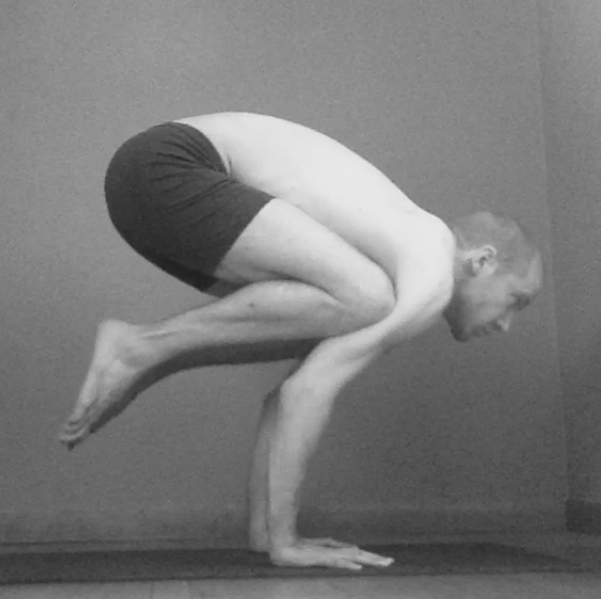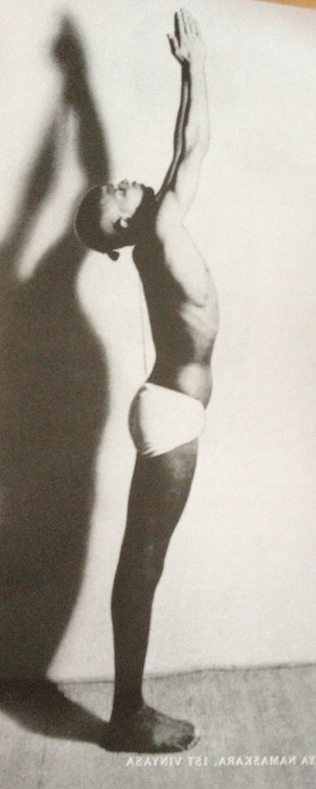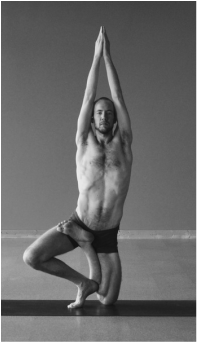|
I came to this yoga at a great time. It was five years ago, amidst all of the controversy about copyright. Bikram (Choudhury) was suing many studios to prevent them from offering his brand of yoga. He claimed that he owned the series of 26 postures known as "Bikram Yoga" and no one else could teach it without his permission and control.
"HOT" YOGA The studio that I practiced at is a "Hot Yoga" studio. It offers the 26 postures in a heated room, just like Bikram teaches. But there is no mention of Bikram. Quite the contrary. They don't say the name Bikram and pretend that he doesn't exist. This has turned out to be a huge blessing for me. I got all the benefits of the yoga - the postures, the discipline, the sequencing, the therapy, the will-power - without the cultish worship of the man who it came from. HELL-BENT & TONY SANCHEZ With the publishing of Benjamin Lorr's Hell-Bent in 2012, Tony Sanchez entered into the popular consciousness. Sanchez was a student of Bikram in the 70s, long before the Bikram Yoga empire became what it is today. Sanchez is now about 60 years old and maintains a daily practice. He offers training in Ghosh Lineage Yoga including all of the postures and exercises that Bikram excludes. He also teaches from an opposing viewpoint to Bikram's - non-possessive, patient, compassionate and peaceful. And un-heated. Ghosh yoga suddenly has two senior teachers instead of one. LAWSUITS Now, as the intensity of sexual assault lawsuits against Bikram grows, many yogis are breaking ranks. They are taking his name off of their studios and even making changes in the yoga itself. USA YOGA USA Yoga, a newish organization trying to nurture yoga competition, has its eyes on getting yoga into the olympics. Founded by Bikram's wife Rajashree, it started as an extension of Bikram Yoga but is steadily moving away. USA Yoga is still firmly rooted in the Ghosh tradition, using mainly the postures taught by Ghosh, but it is trying to open the participation to yogis of other traditions. BUDDHA BOSE In June of this year, we will be publishing the lost manuscript of Buddha Bose, one of Ghosh's star pupils in the 30s, long before Bikram came along. Bose's presentation of the yoga is enlightening in both its similarities and its differences to Bikram's yoga. Slowly but surely, the tentacles of Ghosh's yoga are spreading. More senior teachers and more historical references are available. Bikram's monopoly on the yoga is crumbling, making way for more individuality, exploration and development in the tradition. This is a great time for Ghosh Yoga.
5 Comments
When I am struggling with a posture, it is almost inevitably because I am doing it incorrectly or trying to push it deeper than I am prepared to do. It can feel like I am actually "fighting" the posture, pushing my body and mind to do something they don't want to do. But every single yoga posture is an effortless body position when executed correctly.
Now, when I find myself fighting a posture, I go back to the beginning. I examine the purpose of the posture as a whole and the function of each individual body part. Then, I approach it like a beginner and build it piece by piece. I have written about this before regarding Cobra Pose and more recently Crow Pose. The most important part of building a posture is the pursuit of effortlessness. Sure, muscles will work and get tired, and we will come to the edge of our flexibility. But it should always be done with a clear, quiet mind and a sense of ease. When I begin re-building a posture, it looks awkward and very shallow for weeks or even months. But before too long the postures open up deeper than ever before, but this time they are free and easy, without the struggle. So if you are ever "fighting" a posture, go back to the beginning. Start over, like it's your first time. Do each part right, do it with simplicity and peace. Soon, the whole posture will bloom. For the past year I have practiced mainly Tony's "Master's Core System," (MCS) a series of 40 postures that builds on Bikram's 26. The MCS includes more backbending, twisting, asymmetry, and a lot more restorative stretching positions than the 26. I also practice lots of other postures from the Complete Ghosh Series (84 postures) and other traditions. This miscellaneous practice helps me understand my body and improve it, and it helps me understand the focus and power of the body's energy.
Recently I find myself craving a more consistent practice of the advanced postures. I am not yet ready for the Complete Series. There is plenty in there that is far beyond my reach (for now). I need a practice that bridges the gap between MCS and the Complete Series, something that begins to incorporate the advanced movements and positions, preparing my body and mind for the pinnacle postures. It is easy enough to pick the postures that I want to work on. Most yogis I know who practice at home develop their own approach. I will pick the postures that are nearly accessible but still challenging. With practice I will improve. The significant thing that I am slowly realizing is that I need a consistent, repeated series of postures. Just like practicing the same 26 every day in Bikram's class, or Ashtangis who have set series that they don't deviate from. It will serve me better than choosing on a daily basis what I will tackle. So I need to develop a practicable series that will be useful to me for the next year or so. I am becoming more patient. The great postures like Scorpion and Full Wheel and Mountain will be there for me when I am ready. But instead of practicing them now, I must be patient and let my body and mind progress. I must have discipline and faith. "Satwa is order and tamas is disorder. So in all activities, it is good to bring some order and hence it is suggested that we should determine beforehand what we want to do during our yoga practice, like having an agenda for a meeting."
"In fact, in all religious activities in India, it always starts with sankalpa, a clear-cut determination about what one is going to do..." "Even the commentator to Hatha Yoga Pradipika refers to the sankalpa before starting the practice of yoga. One should ponder a little before starting one's practice and have a definite agenda of practice. A random practice is not conducive to orderly thought process. And subsequent practices, such as dhyana (meditation), all require a disciplined mind. It can start with a determination of a definite course for practice." From Yoga Beneath the Surface by Srivatsa Ramaswami and David Hurwitz.
Below are 8 versions of the 1st Vinyasa (position) of the Sun Salute. Where I couldn't find a picture of the yogi/teacher themselves, I chose a picture of a student under the direct guidance of the teacher. To begin with, let's discuss what is the same in all of these postures. Feet are together, legs straight, arms lifted overhead. All of them are taught on the inhale. Most have the palms together pointing straight up, with the head tilted back to some degree looking up.
4 of these yogis represent the Ashtanga Vinyasa tradition: Pattabhi Jois, the founder, Gregor Maehle, David Swenson and Kino MacGregor. Their postures are very similar, coming from the same source: Pattabhi Jois. Both PJ and KM have their heads thrown back, while GM and DS have a more subtle tilt to the head. Notable differences in execution of this posture come from Dharma Mittra and Srivatsa Ramaswami. Dharma Mittra has arms apart, hands facing forward. Instead of reaching straight up, he stretches backward, making this posture a moderate backward bend. Both Rodney Yee and Baron Baptiste also have a bit of a backward bend, though their hands are joined together. Srivatsa Ramaswami has fingers interlaced and palms turned upwards, opening the shoulders. Arms are stretched backward past vertical, and the chin is tucked to the chest. Today I am up to 20 counts in Samavrtti Pranayama, the even-counted breath. I practiced at 19 counts for several days and was effortless yesterday, so today I changed to 20.
20 seconds in, 20 seconds out, for about 20 minutes. That will be my practice for the coming days or weeks, until I am effortless again. If you are interested in beginning a Pranayama practice, please consult a qualified teacher. Never hold your breath longer than is comfortable, it will be detrimental to your health instead of beneficial. How do we find peace
When we are surrounded by violence? How do we find humility When we are surrounded by pride? How do we find silence When the air is filled with pompous voices? How do we find moderation When we are surrounded by excess and gluttony? How do we find happiness When we are encouraged toward dissatisfaction? Are these things within us? Do we find them by turning inward? Will we learn to resist? How can we become pure? "While today on the one hand we face the problem of meditators who do not adequately prepare the body for meditation, on the other hand we have Hatha yogis who get stuck in the meaningless drudgery of mere physical yoga. If the yogi does not go beyond the practice of posture and breath work, and does not graduate to and include formal meditation, then Hatha Yoga is not what it purports to be. It is then mere body-building, body-beautifying and gymnastics. There is nothing wrong with those, as long as the label clearly states we are doing only that. The problem with today's physical yoga is that it pretends to be more. And it is so only if it merges into the mental and spiritual disciplines of yoga."
From Yoga Meditation by Gregor Maehle. I have never been a fan of the Sun Salute, Surya Namaskara (blasphemy, I know!), what many consider to be a foundational element to modern yoga. I have never felt particularly comfortable or profound when practicing it, even when I could execute it proficiently. I have always felt like it was a bit athletic, an idea that was reinforced when I read that it was an exercise in the early 1900s practiced by wrestlers and adopted later by yogis (Yoga Body by Mark Singleton). It seems more like a wrestling exercise than a yogic one.
It doesn't help that my tradition, Ghosh, doesn't really incorporate the Sun Salute. So I have never practiced it with much devotion, and I have never been taught it with any precision or inspiration. I have practiced it thousands of times, been guided through it (with questionable guidance) on many occasions, but still can't find its resonance. It's hard to deny that the Sun Salute is an important part of modern yoga. As far as I know, it dates to Krishnamacharya in the 1930s, trickling down to us (alongside the idea of vinyasa) through his students Pattabhi Jois, Iyengar and Desikachar. Now it is the backbone of every "power flow" class that draws its inspiration from Jois' Ashtanga Vinyasa Yoga (AVY), and that is most of them. I am curious about it now, though. My respect for Krishnamacharya's teachings has grown tremendously in the past year, and I am beginning to see great depth in Jois' system of AVY. So there must be something to this Sun Salute thing. I am going to study Krishnamacharya's writings and descriptions of the purpose and execution of the Sun Salute alongside the writings of Pattabhi Jois and some of his senior students (namely Gregor Maehle, Richard Freeman, David Swenson and Kino MacGregor). I will also look into Iyengar's writings and Desikachar's. Same for Srivatsa Ramaswami, one of Krishnamacharya's longest standing students. I will post my findings and comparisons, trying to shake out the source and purpose of this commonplace exercise. Oh, and I will practice Sun Salutes with devotion as I try to understand them. |
This journal honors my ongoing experience with the practice, study and teaching of yoga.
My FavoritesPopular Posts1) Sridaiva Yoga: Good Intention But Imbalanced
2) Understanding Chair Posture 2) Why I Don't Use Sanskrit or Say Namaste 3) The Meaningless Drudgery of Physical Yoga 5) Beyond Bikram: Why This Is a Great Time For Ghosh Yoga Categories
All
Archives
November 2017
|













 RSS Feed
RSS Feed